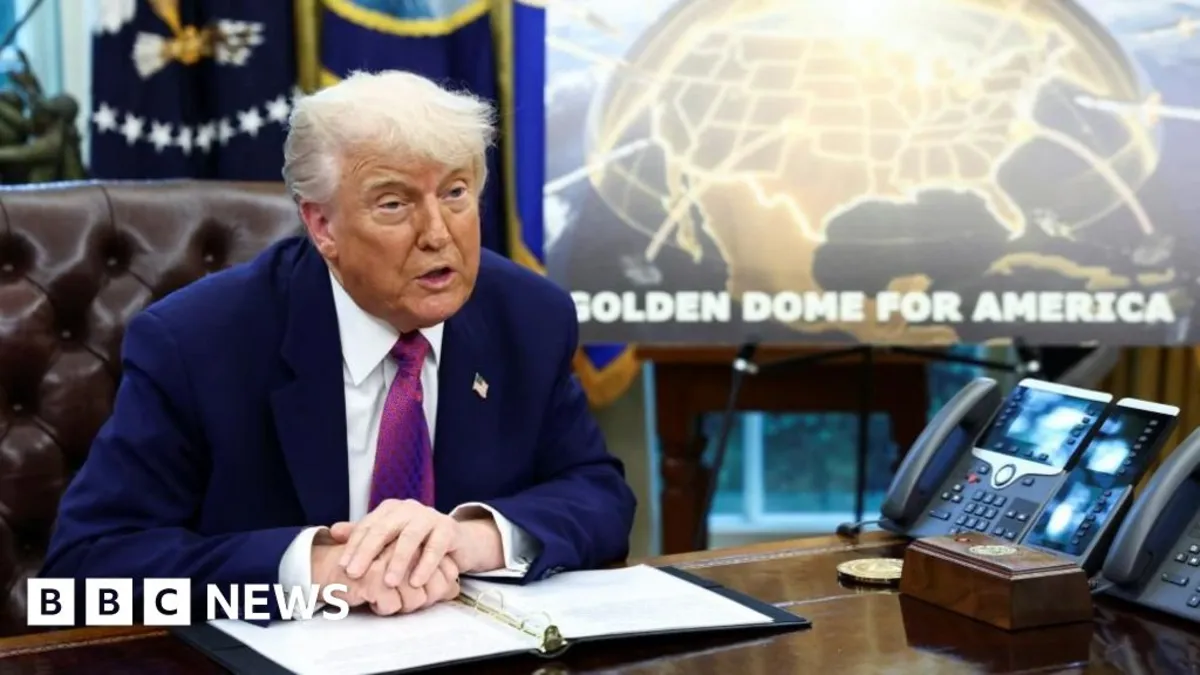
In a significant announcement, US President Donald Trump has revealed the selection of a design for the highly anticipated Golden Dome missile defence system. This advanced defence initiative is set to be operational by the end of Trump's term in office. Following his return to the White House in January, Trump expressed his commitment to developing a system that is specifically aimed at countering next-generation aerial threats to the United States, including both ballistic and cruise missiles.
An initial funding allocation of $25 billion (£18.7 billion) has been earmarked in a new budget bill for the Golden Dome project. However, government estimates suggest that the total cost of this missile defence system could escalate significantly over the coming decades. Officials have raised concerns that existing missile defence systems have not kept pace with the increasingly sophisticated weaponry developed by potential adversaries.
To oversee this ambitious project, President Trump has appointed Space Force General Michael Guetlein, who currently serves as the vice chief of space operations at the Space Force. Just a week into his second administration, Trump directed the Department of Defence to formulate plans for a system capable of deterring and defending against aerial attacks, which the White House identifies as the most catastrophic threat to national security.
During a press briefing in the Oval Office, Trump outlined that the Golden Dome system will incorporate next-generation technologies across various domains, including land, sea, and space. Key components will include space-based sensors and interceptors designed to neutralize threats. Furthermore, Canada has expressed interest in collaborating on the project, with former Canadian Defence Minister Bill Blair noting the importance of being aware of regional threats, particularly in the Arctic.
President Trump emphasized that the Golden Dome system would be capable of intercepting missiles launched from anywhere in the world, including those originating from space. He drew inspiration from Israel's Iron Dome, which has effectively intercepted rockets and missiles since 2011. However, Trump stated that the Golden Dome would be significantly larger and designed to address a broader range of threats, such as hypersonic weapons and fractional orbital bombardment systems (FOBs), which can deliver warheads from space.
The Golden Dome is intended to have a high success rate in intercepting missiles at various stages of their trajectory—before launch and while airborne. All operations associated with this system will be centralized under a single command, as indicated by US defence officials. Trump noted that the programme would require an initial investment of $25 billion, with projections estimating a total expenditure of $175 billion over time. Despite this, the Congressional Budget Office has indicated that the overall spending could reach as high as $542 billion over 20 years, particularly for the space-based components.
Pentagon officials have long voiced concerns regarding the inadequacy of current missile defence systems in light of new technologies being developed by nations like Russia and China. In a statement, Trump remarked, "There really is no current system... there has never been anything like this." A recent briefing document from the Defence Intelligence Agency highlighted the expected expansion and sophistication of missile threats, underscoring the urgency for the United States to enhance its defensive capabilities.